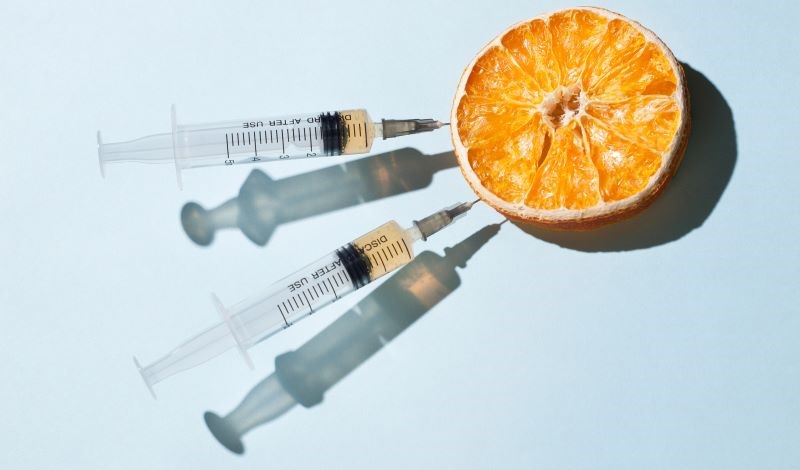
Scholar argues that loopholes in U.S. food regulation put consumers at risk.
The U.S. Food and Drug Administration (FDA) recently banned several food additives used commonly in foods such as ice cream, candy, and baked goods, citing research suggesting they cause cancer. But some of these suspected carcinogens were only listed on nutrition labels as “artificial flavors.”
In a recent article, Roxana R. Soroudi argues that regulatory loopholes allow food additives to escape clear and specific labeling, even when they may be dangerous to consumers. She claims that an overused statutory exemption, known as the generally recognized as safe (GRAS) exemption, enables manufacturers to bypass the food additive petition process and take their products directly to market—avoiding FDA review entirely.
American food additives are governed by the 1958 Food Additives Amendment (FAA) to the Federal Food, Drug, and Cosmetic Act. Soroudi explains that, under the FAA, an additive substance is not considered safe for use unless it either receives premarket FDA approval through the food additive petition process or is subject to an exemption.
To complete the FAA’s food additive petition process, manufacturers perform testing and submit evidence on their additive’s safety for FDA review. Upon approval of the petition, FDA issues a regulation outlining the specific conditions in which the additive is safe for use.
Although FDA has the final say in this petition process, Soroudi suggests that the FAA has shifted the burden of safety off of FDA and onto manufacturers, which test their own products, collect their own evidence, and turn to the agency only for review. Under this statutory framework, FDA is no longer accountable for demonstrating the safety of an additive, Soroudi claims.
FDA accountability comes into question when a substance qualifies for an additive exemption, according to Soroudi. The FAA provides exceptions to its definition of “food additive,” allowing qualifying substances to bypass the additive petition process and go straight to market. The primary exemption is the GRAS exemption, which allows for the use of substances “generally recognized as safe.”
To qualify for the GRAS exception, a substance must be shown either to have been commonly used in food before 1958 or to be commonly considered “safe for its intended use” by “qualified experts, based on generally available scientific evidence.”
When it comes to determinations of GRAS status, the FAA text is not clear on what FDA involvement looks like, Soroudi notes. She argues that FDA has interpreted this ambiguity to mean that the agency does not have statutory authority over GRAS status determinations, leaving manufacturers to make these safety determinations themselves by collecting their own experts and evidence.
Consumers might well think that, just as with the additive petition process, the manufacturers’ GRAS determinations would be subject to the need for FDA approval. But that would be an incorrect conclusion, says Soroudi. Manufacturers are able to make GRAS determinations entirely independent of FDA review, she notes. Manufacturers are not even required to notify FDA that a determination was made, she explains. Instead, GRAS notifications are purely voluntary. Once a manufacturer makes an internal GRAS determination, it can immediately sell the substance to consumers, without notifying anyone.
Soroudi claims that what has resulted from the GRAS rule is a “gaping black hole” in food additive regulation. She argues that manufacturers abuse the GRAS exemption to avoid a lengthy petition process, or worse, to sneak harmful novel substances into the market. Soroudi contends that the GRAS exemption has created a situation that the FAA was specifically drafted to avoid: the entry of unknown, potentially harmful substances into the food supply.
Despite her significant concerns about the GRAS rule, Soroudi acknowledges the reasoning provided by the exemption’s supporters within the industry. The origins of the GRAS exemption were rooted in logical efficiency concerns, she notes. Legislators realized that it would be inefficient and impractical to require common, routinely used additives such as salt and vinegar to undergo pre-market FDA review repeatedly. GRAS rule supporters stand by these efficiency motives and argue that FDA’s limited time and resources should go toward regulating the novel substances of growing food innovation, rather than GRAS substances which have been widely reviewed and approved by internal experts.
Soroudi argues that allowing GRAS determinations to be fully independent creates an honors system in which the manufacturer is trusted to properly safety-check its own product, in which it has a vested interest. Furthermore, she insists that as long as GRAS notifications to FDA are voluntary, unknown substances will continue to enter the American food system, putting consumers at risk. She asserts that the current framework gives profit-driven manufacturers a free pass to put substances onto shelves without proper oversight or transparency.
To protect consumers and escape the unknown, Soroudi advocates a reexamination of the FAA to foster greater FDA involvement and accountability. She suggests that GRAS notifications to FDA be made mandatory, and proposes greater FDA involvement to aid transparency and cumulative risk assessment.
Should FDA resources become an issue, manufacturers can be required to pay a fee to obtain a GRAS exemption, argues Soroudi. She concludes that, although FDA may appear constrained by FAA interpretation and limited resources, changes can and should be made to achieve the original intentions of the act: to ensure safety of substances entering the food system.



